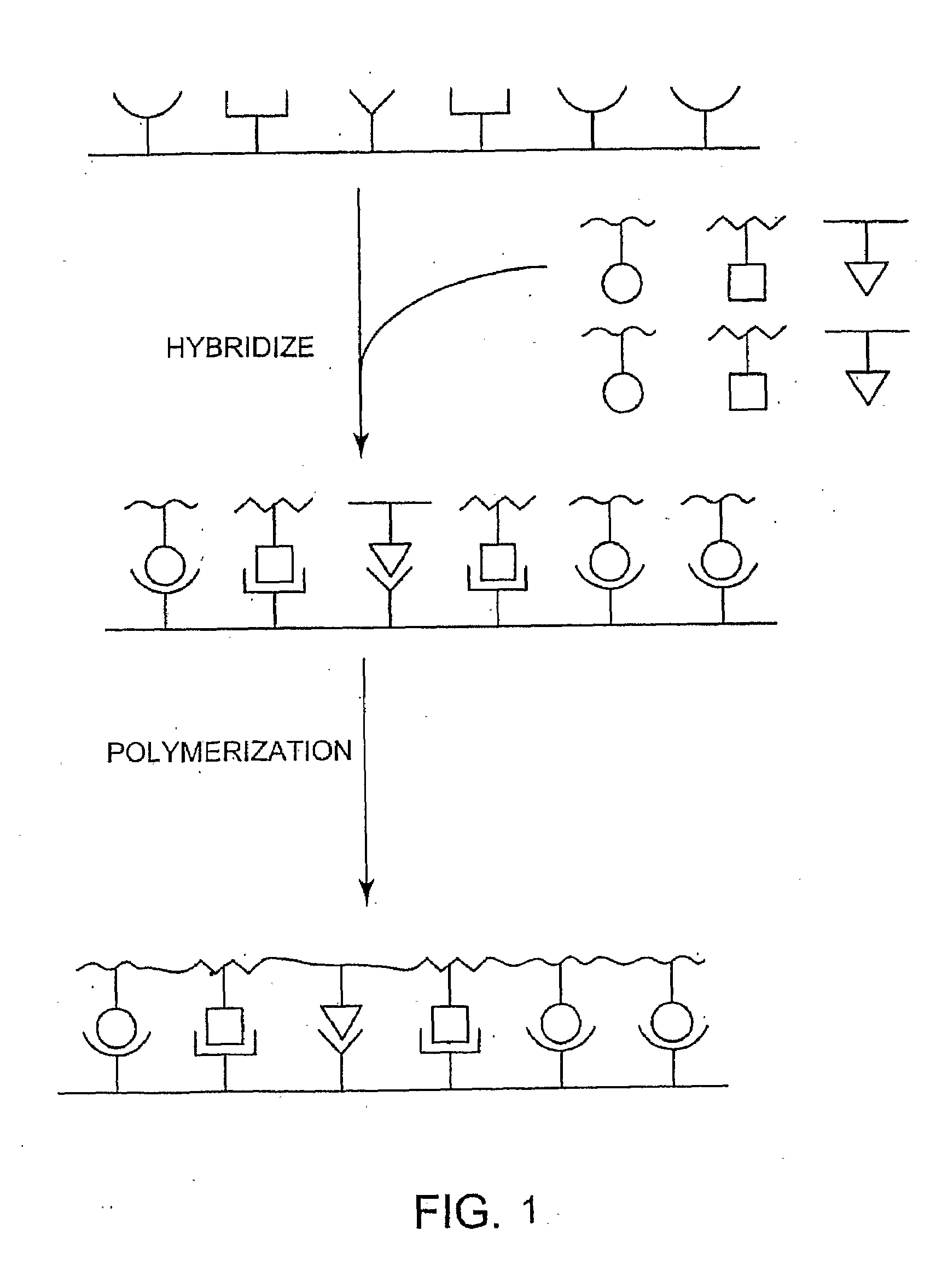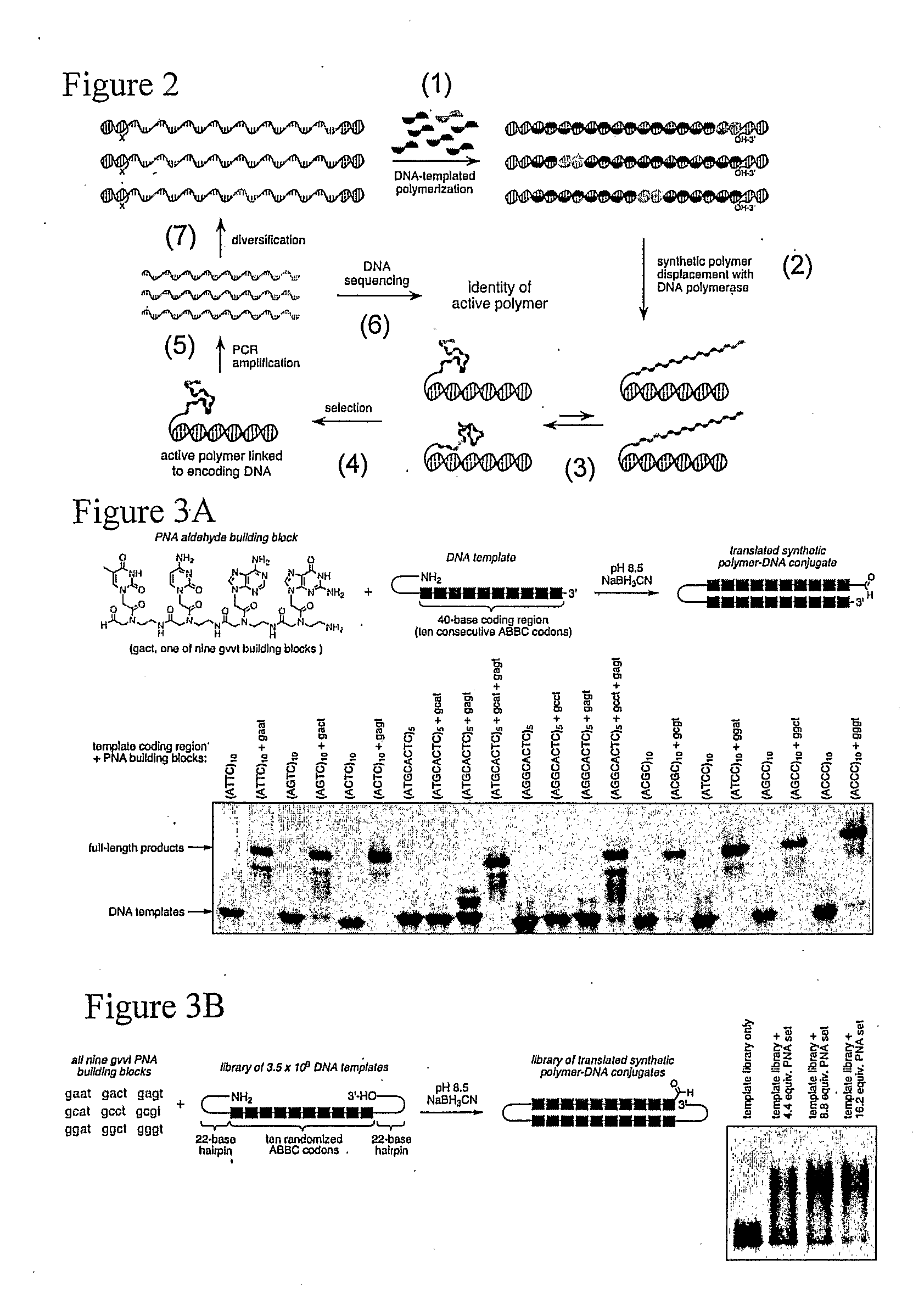Polymer evolution via templated synthesis
- Summary
- Abstract
- Description
- Claims
- Application Information
AI Technical Summary
Benefits of technology
Problems solved by technology
Method used
Image
Examples
example 1
Polymer Evolution by Templated Synthesis
[0128]A proposed scheme for synthetic polymer evolution using DNA-templated organic synthesis is shown in FIG. 2. Peptide nucleic acid (PNA) is an attractive candidate for this strategy because PNA monomers are readily synthesized in the laboratory and because their ability to associate sequence-specifically with nucleic acids enables PNA coupling to be controlled by nucleic acid-templated synthesis (Nielsen, P. E. (1997) BIOPHYS. CHEM. 68, 103-8; Schmidt et al. (1997) NUCLEIC ACIDS RES. 25, 4797-802; Schmidt et al. (1997) NUCLEIC ACIDS RES. 25, 4792-6; Bohler et al. (1995) NATURE 376, 578-81). Previous studies have established the ability of DNA-templated reductive amination reactions (Li, X et al. (2002) J. AM. CHEM. SOC. 124, 746-7; Li, X. et al. (2002) ANGEW CHEM. INT. ED. ENGL. 41, 4567-9; Rosenbaum & Liu (2003) J. AM. CHEM. SOC. 125, 13924-5; Gothelf et al. (2004) J. AM. CHEM. SOC. 126, 1044-6) to mediate the polymerization of PNA aldehy...
PUM
| Property | Measurement | Unit |
|---|---|---|
| Solubility (mass) | aaaaa | aaaaa |
| Catalytic activity | aaaaa | aaaaa |
| Stability | aaaaa | aaaaa |
Abstract
Description
Claims
Application Information
 Login to View More
Login to View More - R&D
- Intellectual Property
- Life Sciences
- Materials
- Tech Scout
- Unparalleled Data Quality
- Higher Quality Content
- 60% Fewer Hallucinations
Browse by: Latest US Patents, China's latest patents, Technical Efficacy Thesaurus, Application Domain, Technology Topic, Popular Technical Reports.
© 2025 PatSnap. All rights reserved.Legal|Privacy policy|Modern Slavery Act Transparency Statement|Sitemap|About US| Contact US: help@patsnap.com



